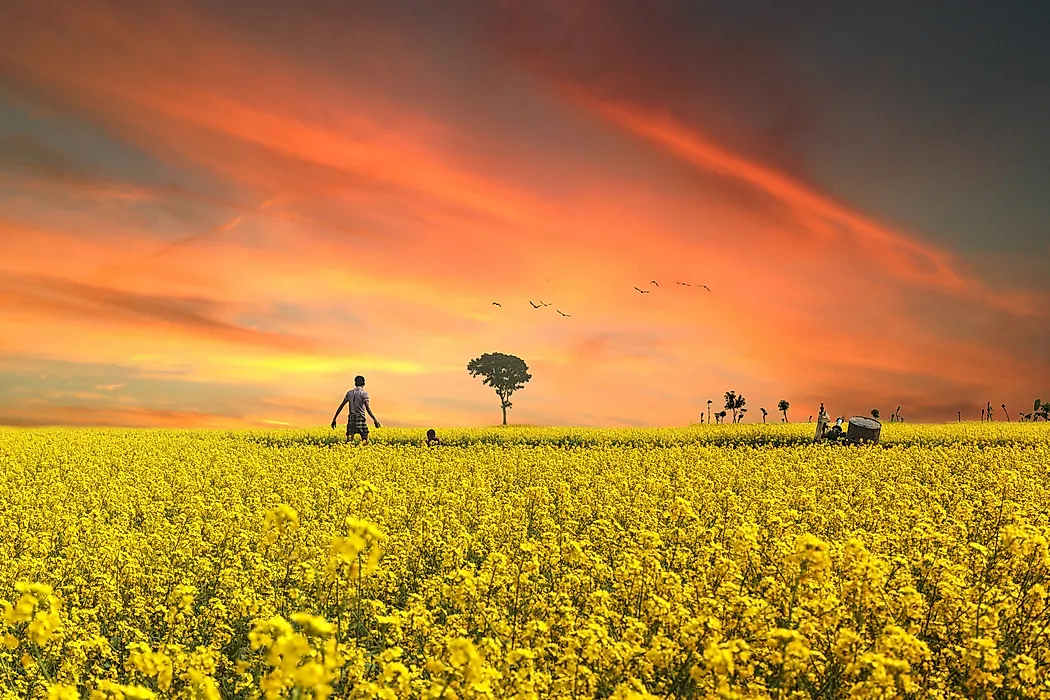The Most Arable Countries Worldwide

In the midst of modern industrialization and global trends towards urbanization, coupled with the ever-persistent human population pressures, careful thought is increasingly being given to the preservation of agricultural land. There are many reasons why a country would want to preserve their arable land. Aside from the prospect of potential revenues generated by the general populace and the government, the agricultural sector also fosters financial and food security, and remains one of the few economic sectors that can be viewed as more or less self-sufficient. In modern times, the agricultural sector has even rescued major world economies from the brink of economic meltdowns, when it proved to be the only feasible means to promise survival. Because of differences in climate, economics, cultural values, and demography, however, the percentage of arable land differs from country to country. In this article, we look at some of the countries with the highest percentage of their land areas available for agricultural use, and the factors that make such usage possible.
Climate
Simply put, even without human influences, climate can dictate when and where crops can be grown, and how much they can potentially yield. All plants require some combination of suitable light, temperature, soil, and moisture conditions in order to thrive. Generally, geographic locations, and their typical weather patterns, are the primary determinants of such factors.
Under-Development
Technically, when a country is under-developed, it means there are fewer urban centers, fewer industries, limited infrastructural development, and a relative lack of social amenities. Looking at this in relation to agricultural practices, underdevelopment can mean two very important things – a lack of jobs in the formal sector and increased land areas lying idle. Because there are few other sources of income, people will naturally tend to use such vacant spaces for agricultural land, as it often stands as the most readily available means of supporting a livelihood. This phenomenon is common in many third world countries, such as Somalia, Djibouti, Togo and Bangladesh.
Land Zoning and Settlement Schemes
Land zoning leads to well-structured settlement schemes. People may be asked to move out of certain areas and settle in other areas that were originally considered inhabitable, thereby leaving behind the maximum area for agriculture. The concept of land zoning often coincides with ‘best-use’ policies for land reclamation and land rehabilitation, which all contribute to increased food security.
Prohibitive Prices of Arable Lands
If you wish to purchase a parcel of agricultural land in a country like the United Kingdom, you may be forced to hand up seemingly ridiculous amounts of money. When prices of arable lands are too high compared to those of lands for commercial purposes, people will generally move in the other direction. Many people will opt for smaller parcels of land around urban centers, thus leaving a huge chunk of land that can then be dedicated for agricultural uses.
Sparse Populations
Because certain countries are sparsely populated, it goes without saying that the percentage of land available for agricultural uses therein will be higher. This partially explains why less densely populated countries like Rwanda and the Ukraine feature in our list. This is enhanced further when low populations also have low competition for jobs in the formal sector. This leads to massive rural to urban migrations, which in turn renders different portions of small farm-dominated lands left behind. These can then be consolidated and used for large-scale agricultural purposes.
For countries to maintain a high percentage of their land for agricultural use, one, or a combination, of many of the conditions presented above must be met. However, it is evident that certain natural events also play some role in making that possible. Another thing that should be noted is that having a big percentage of land for agriculture does not necessarily translate into food security. Indeed, the latter has been achieved by countries with low arable land percentages, while heavily farmed regions battle hunger, due to differences in the methods, chemicals, and technologies used.
The Most Arable Countries Worldwide
| Rank | Country | Arable Land (%) |
|---|---|---|
| 1 | Bangladesh | 59 |
| 2 | Denmark | 58 |
| 3 | Ukraine | 56 |
| 4 | Moldova | 55 |
| 5 | India | 53 |
| 6 | Togo | 49 |
| 7 | Hungary | 49 |
| 8 | Burundi | 47 |
| 9 | Rwanda | 47 |
| 10 | The Gambia | 44 |
| 11 | Czech Republic | 41 |
| 12 | Malawi | 40 |
| 13 | Pakistan | 40 |
| 14 | Haiti | 39 |
| 15 | Isle of Man | 39 |
| 16 | Romania | 38 |
| 17 | Lithuania | 38 |
| 18 | Nigeria | 37 |
| 19 | Mauritius | 37 |
| 20 | El Salvador | 36 |
| 21 | Poland | 36 |
| 22 | Comoros | 35 |
| 23 | Uganda | 34 |
| 24 | Germany | 34 |
| 25 | France | 34 |











